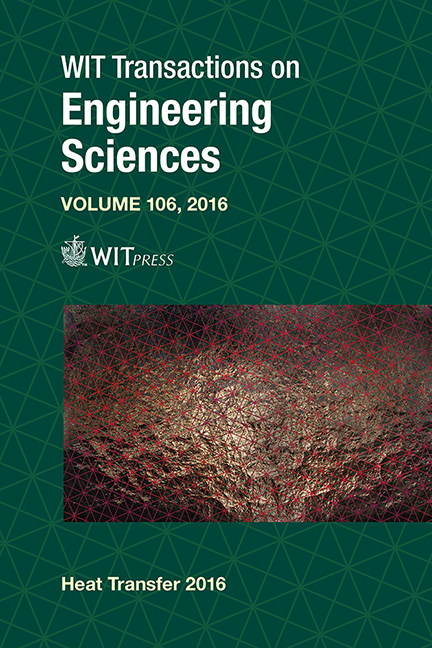Polymeric Hollow Fiber Heat Exchangers
Price
Free (open access)
Transaction
Volume
106
Pages
11
Page Range
95 - 105
Published
2016
Size
1,409 kb
Paper DOI
10.2495/HT160101
Copyright
WIT Press
Author(s)
M. Raudenský, I. Astrouski, T. Bozova
Abstract
Metallic heat exchangers have a number of well-known shortcomings such as high weight and cost and low resistance to corrosion. Polymeric hollow fiber heat exchangers were proposed about a decade ago as an alternative for low temperature applications. Although experimental results have been published for liquid-to-liquid applications, there is no data for liquid-to-gas applications. To overcome this lack of data, two liquid-to-air cross-flow heat exchangers were prepared and tested. Two types of polypropylene hollow fibers (wall thickness 50 μm, outside diameter 800 μm and 600 μm) were used to create heat exchangers with a heat exchange area of approximately 0.6 m2. An original approach (fiber fabrics were woven) was utilized to achieve a uniform distribution of fibers. The heat transfer performance was studied with hot liquids (60–90°C ethyleneglycol-water brine or water) flowing inside the fibers and cooling air flowing across the fibers. Experiments showed that hollow fiber cross-flow heat exchangers can achieve high values of overall heat-transfer coefficients (200–450 W/m2 K) and can compete to ordinary finned-tube heat exchangers.
Keywords
polymeric hollow fibers, heat exchanger, forced convection





